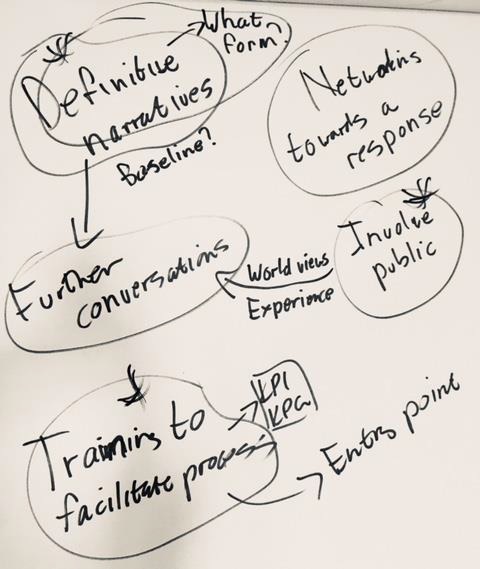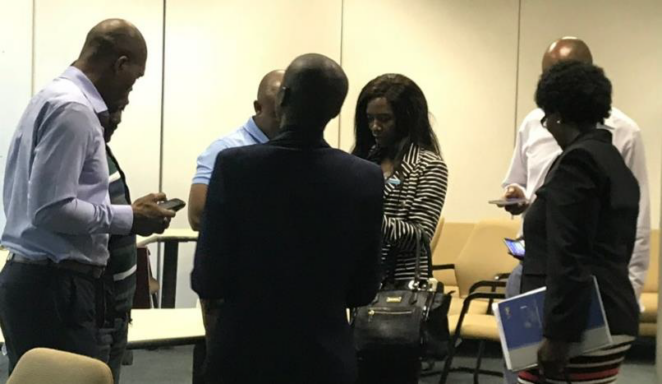Climate narratives: What have we tried? what have we learned? What does this mean for us going forward?

Introduction
The motivation for developing climate risk narratives or stories links to the fact that when people do engage with complex science, they build a story in their head that explains the information with which they’re engaging. The narratives were originally developed to short-circuit this process by building stories for the individual engaging with climate information, instead of counting on her/him to translate the information effectively into her/his own story.
This briefing note provides key discussion points from the third FRACTAL learning webinar, during which the team reflected on the climate risk narrative process. The session was structured in three main parts:
- an introduction on the evolution of the narratives,
- feedback from a few city researchers on their narrative processes,
- then groupwork and feedback to reflect on the key questions.
To read more about why CRNs are useful in communicating and integrating knowledge on climate risk, what we have learned within the FRACTAL project about their application, their limitations and caveats, and recommendations on their application read this article. The first episode of the FRACTAL podcast discusses CRNs in great detail. The CRN method has been applied in Windhoek to understand the contested nature of water that is present in the narrative or ‘story’ of the water problems and challenges in the city of Windhoek in the context of climate change. Read this article to understand an overview of the narrative approach, how it was applied in Windhoek, and see the results of the method. This article also explores the use of CRNs in Windhoek for co-production of climate information.
*Download the full briefing note from the right hand column. The key messages from the report are provided below. See the full text for much more detail
Lessons Learnt
The evolution of the narratives
Narratives of climate change were first developed as climate information communication devices for the UNFCCC; and the Third National Communication for South Africa.
- The Climate Systems Analysis Group developed climate risk narratives for the City of Cape Town, who had contracted the team to update climate projections for the city
- A process was included, during which representatives from the City of Cape Town engaged with the narratives that were produced by climate scientists.
- The narratives were then pulled into the FRACTAL project as a way of bringing the climate conversation and science into the city learning processes.
- Through FRACTAL, the narratives evolved into a knowledge integration device, the climax for which has been the work done in Blantyre, Gaborone and Harare.
- In these cities, socioeconomic narratives were first developed by people living within the city, after which a climate lens was applied
Feedback from cities on narrative processes
In Maputo
- Participants at the lab perceived the narratives as final stories for the future of the city.
- The negative feedback that was received seemed to indicate that participants felt slightly offended by the negative futures presented as these could indicate that leaders or institutions are not doing their job.
- Participants seemed more accepting of positive narratives.
In Harare
- The narratives that were developed by the city researchers were received well.
- Some people highlighted the importance of focussing on a positive future.
- The lead researcher from Harare was convinced that the way the narratives landed was influenced by the political context.
- Other stakeholders provided feedback that positive narratives would trigger positive decisions from decision makers.
- Other comments related to the idea that the situations described in the narratives are already being felt.
In Lusaka
- The narrative process has included other interesting activities. For example:
- The city team synthesised the narratives into an infographic.
- It also facilitated a useful discussion on possible response strategies for the futures described in the narratives.

- The narratives have also been included in proposal writing processes in an attempt to access funding, for example from the Green Climate Fund.
In Gaborone
- The process facilitated learning across departments and groups about the work that others are doing.
- Participants seemed impressed that they had common objectives and many phone numbers were swapped to continue conversations.

In Blantyre
- Participants reflected on the interventions that their departments are currently implementing.
Summarising the evolution and application of narratives
Climate-related narratives have been used in different ways, as…
- a process to explore systems and impacts on these systems as well as decision making
- a platform to identify more information gaps for more resilient decision making, and how to go about filling these. This is not only relevant for climate information, and relates to the connections that were evidently made in Blantyre and Gaborone.
- a tool to imagine the future and think about possible ways of the visioning the future together.
What have we tried?
- In Lusaka and Windhoek, we began developing narratives about risks relevant to the cities that were consistent with messages coming out of climate projections. This was still very much within the framing of a communication device; situated between the evidence and someone wanting to use that evidence.
- Infographics have been developed for Lusaka, Maputo and Windhoek.
- In Blantyre, Gaborone and Harare, the process was started (i.e. initial narratives written) by researchers living and working in these contexts, after which climate information was weaved in.
What have we learned?
- The narratives are a good way to start conversations and engage s/holders but how they land dependents on the type of stakeholders who are engaged in the process.
- Some stakeholders are inspired by a positive narrative rather than a gloomy situation.
- It is extremely important that narratives be aligned with ongoing processes in context
- Theoretical framework is of service to a practical context.
- Data contained in the narratives need to come from available sources in each of the countries.
- There’s some uncertainty with regards to when to take action.
- The infographic should be used as a complementary tool.
- Tying the narratives to evidence is a complex process.
- The person or people who write the first narrative very much set the overarching theme for the stories.
What does this mean for moving forward?
- We need to have discussions about the final outputs.
- We should think about how we can check the impact (i.e. develop indicators) to track effective processes that the narratives have supported.
- We should develop guidance notes; we should think about a legacy and how to hand these processes over to the cities.
- Perhaps there is a need to take from the science-policy interface to speaking with communities.
- There is room to integrate narratives into ongoing processes in FRACTAL cities.
- Communicating the process is very important.
This briefing note was produced by Alice McClure, from the Climate Systems Analysis Group, University of Cape Town, with inputs from from Chris Jack (CSAG, UCT) as well as many other FRACTAL team members.
Suggested citation
Future Resilience of African CiTies and Lands (2018). Climate narratives What have we tried? what have we learned? What does this mean for us going forward? Future Resilience of African CiTies and Lands: Cape Town, South Africa.
Related Articles
Related resources
- FRACTAL project website
- FRACTAL: Future Resilience for African Cities and Lands
- Co-producing climate knowledge – Great in theory, but how about practice?
- Africa's Climate: Helping decision-makers make sense of climate information
- Co-producing climate information for Windhoek decision making
- Dialogue for decision-making: unpacking the ‘City Learning Lab’ approach
- Learning within & about climate science: What has transdisciplinary engagement through FRACTAL taught us?
- FRACTAL Podcast Series - Exploring transdisciplinary approaches to support resilience and adaptation decision making
- Climate narratives: What have we tried? what have we learned? What does this mean for us going forward?
- The Story of Water in Windhoek: A Narrative Approach to Interpreting a Transdisciplinary Process
(0) Comments
There is no content